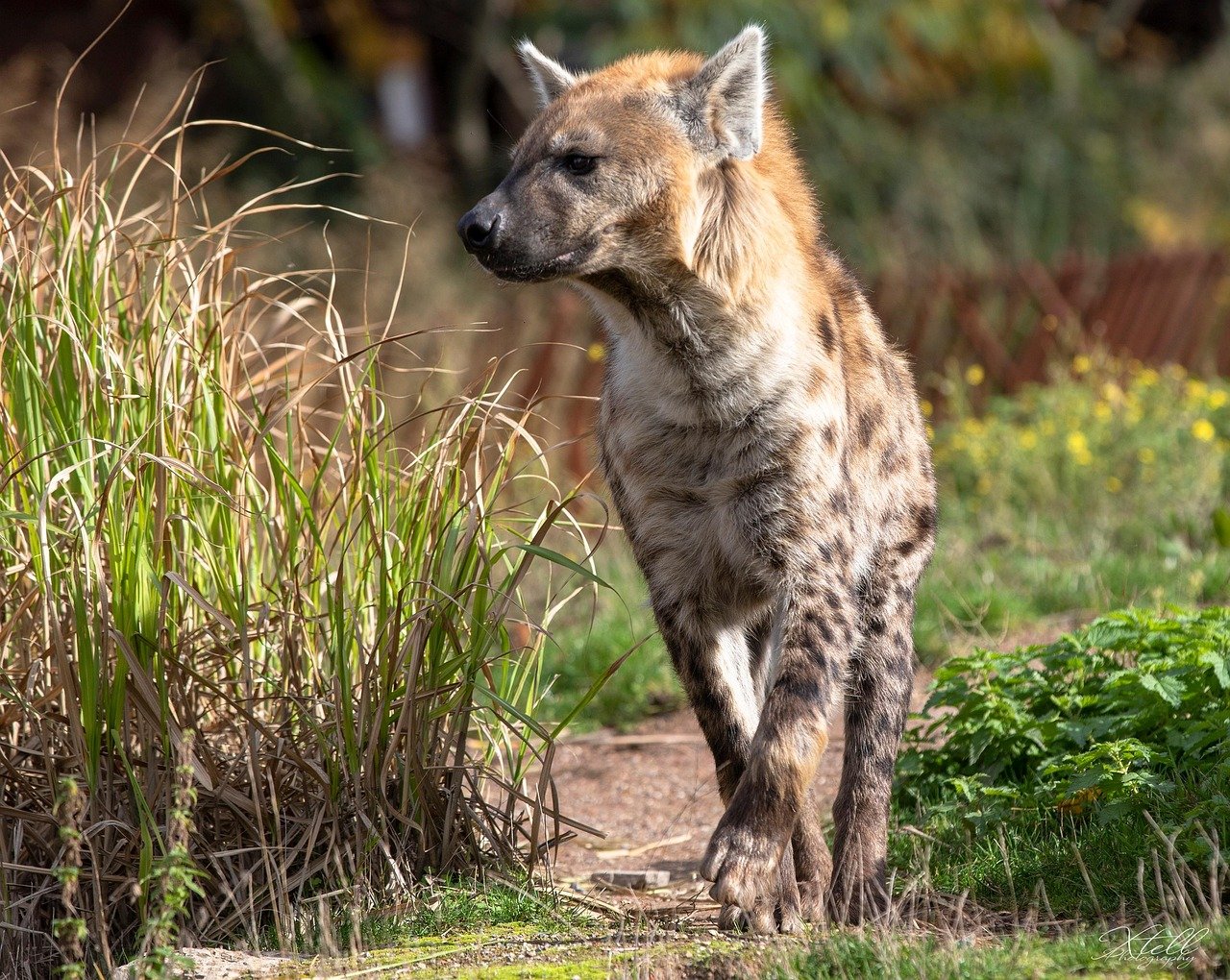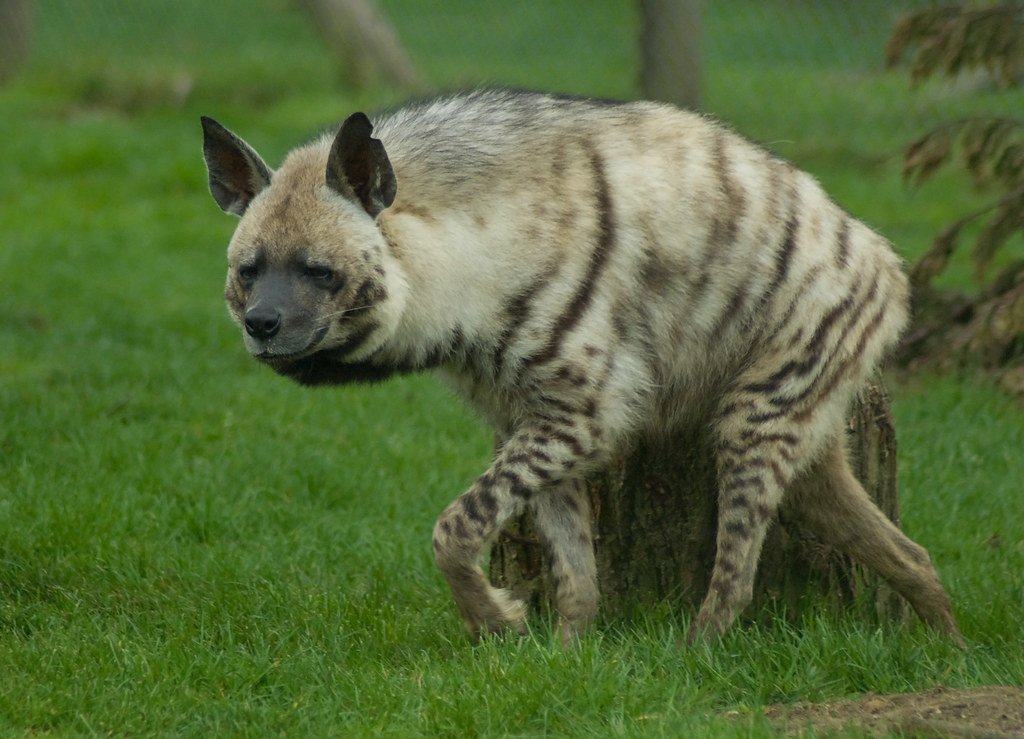Most people think of spotted hyenas when these mysterious creatures come to mind, but there’s another species that’s been quietly slipping toward extinction. The striped hyena, with its haunting call and ghostlike appearance, roams across Africa and Asia in numbers so small that many regions haven’t seen one in decades. These remarkable animals carry secrets that would surprise even the most dedicated wildlife enthusiasts.
Unlike their more famous cousins, striped hyenas live solitary lives and possess abilities that seem almost supernatural. They’ve adapted to some of the harshest environments on Earth, yet their survival hangs by a thread. What makes these creatures so special, and why are we losing them so quickly?
They’re Master Scavengers With Incredible Jaw Power

Striped hyenas possess one of the strongest bite forces in the animal kingdom, capable of crushing bones that would break the teeth of most other predators. Their powerful jaws can exert pressure of up to 1,100 pounds per square inch, allowing them to crack open even the largest bones to access the nutrient-rich marrow inside. This incredible strength comes from massive jaw muscles that give their heads that distinctive, robust appearance.
What’s truly fascinating is how efficiently they use this power. A striped hyena can completely devour a carcass, leaving behind only hair and hooves. They’ve evolved specialized teeth that work like bolt cutters, and their stomachs can digest bones, hooves, and even horns that would be impossible for other animals to process.
Their Distinctive Mane Serves as Both Warning and Protection

The striking mane running along their necks and backs isn’t just for show – it’s a sophisticated communication system and defense mechanism. When threatened or excited, striped hyenas can raise this mane to make themselves appear larger and more intimidating, similar to how a cat arches its back. The longer, darker hairs create an impressive silhouette that can deter potential threats.
This mane also serves as protection during fights with other hyenas or predators. The thick, coarse hair provides cushioning against bites and scratches to vital neck areas. Young hyenas develop their full manes by their second year, and the quality of the mane often indicates the animal’s health and social status within their limited social interactions.
They Can Survive in Extreme Desert Conditions

Striped hyenas have evolved remarkable adaptations that allow them to thrive in some of the world’s most unforgiving desert environments. They can go for long periods without drinking water, obtaining most of their moisture from the food they consume. Their bodies are incredibly efficient at conserving water, and they can even extract moisture from bones and dried carcasses.
During scorching desert days, they seek shelter in caves, abandoned burrows, or rocky crevices, emerging only when temperatures drop. Their light-colored, striped coat helps reflect heat and provides camouflage among desert rocks and dried vegetation. These adaptations have allowed them to colonize regions where few other large predators can survive, from the Sahara Desert to the arid landscapes of Central Asia.
They’re Surprisingly Intelligent Problem Solvers

Recent studies have revealed that striped hyenas possess remarkable intelligence and problem-solving abilities that rival those of many primates. They can remember the locations of food sources across vast territories and have been observed using tools in captivity. Their ability to adapt their behavior based on changing circumstances has helped them survive in rapidly changing human-dominated landscapes.
These hyenas demonstrate complex learning behaviors, including the ability to recognize and avoid human traps and snares. They can also modify their hunting and scavenging patterns based on seasonal changes and human activity. Some researchers have documented striped hyenas that learned to open simple latches and doors, showing a level of cognitive flexibility that suggests much more complex mental processes than previously understood.
Their Reproduction Rate is Surprisingly Low
One of the biggest challenges facing striped hyena conservation is their incredibly slow reproduction rate. Females typically give birth to only 2-4 cubs every two years, and the mortality rate among young hyenas is heartbreakingly high. Cubs remain dependent on their mothers for up to 18 months, learning essential survival skills during this extended period.
The long interval between breeding cycles means that striped hyena populations recover very slowly from any decline. Unlike other animals that can quickly bounce back from population losses, striped hyenas need stable conditions over many years to maintain viable numbers. This reproductive pattern made sense when they faced only natural threats, but it leaves them extremely vulnerable to the rapid environmental changes happening today.
They Have an Extraordinary Vocal Range

Striped hyenas produce an amazing variety of sounds that would surprise anyone who’s only heard their famous laugh. They can growl, bark, whine, and even make sounds that resemble human crying or screaming. Their vocalizations are so diverse and human-like that they’ve inspired countless legends and ghost stories across their range.
Each vocalization serves a specific purpose in their communication system. Soft grunts help mothers communicate with their cubs, while harsh barks warn of danger. The most haunting sound is their long-distance call – a rising howl that can carry for miles across desert landscapes. This call helps solitary individuals locate potential mates during breeding season and establish territorial boundaries.
They’re Living Fossils With Ancient Lineage

Striped hyenas have remained virtually unchanged for millions of years, making them living links to ancient ecosystems. Fossil evidence shows that their ancestors roamed across Europe, Asia, and Africa during the Pleistocene era, alongside saber-toothed cats and early humans. Their body structure and behavior patterns have stayed remarkably consistent across this vast time span.
This ancient lineage means that striped hyenas represent a unique evolutionary branch that, once lost, can never be replaced. They’ve survived ice ages, continental drift, and countless environmental changes, but they’re now facing their greatest challenge in the form of rapid human expansion. Their extinction would eliminate millions of years of evolutionary history and remove a crucial piece of the ecological puzzle.
They Play a Crucial Role as Nature’s Cleanup Crew

Striped hyenas serve as nature’s sanitation workers, preventing the spread of disease by consuming carrion that would otherwise rot and contaminate water sources. In many ecosystems, they’re the primary scavengers, capable of cleaning up carcasses that other animals can’t or won’t touch. This service is particularly important in arid regions where decomposition happens slowly.
Their efficient scavenging also helps maintain the balance between predator and prey populations. By removing weak, sick, or dead animals from the environment, they help keep wildlife populations healthy and reduce the spread of diseases. In areas where striped hyenas have disappeared, researchers have noticed increased problems with carrion buildup and associated health issues in both wildlife and domestic animals.
Their Territory Can Span Enormous Distances

Individual striped hyenas maintain territories that can cover between 20 to 90 square kilometers, depending on food availability and habitat quality. These massive home ranges are necessary because resources are often scattered across vast distances in their arid habitats. They mark their territories with scent glands located near their anus, creating a chemical map that other hyenas can read and understand.
The size of these territories means that even large protected areas may only support a handful of individuals. Conservation efforts must account for these space requirements, which often conflict with human land use needs. As human development fragments their habitat, striped hyenas struggle to maintain territories large enough to support their survival needs.
They Face Persecution Based on Myths and Superstitions

Throughout their range, striped hyenas are surrounded by folklore that portrays them as evil, supernatural creatures associated with witchcraft and bad luck. These superstitions have led to deliberate persecution, with people killing hyenas out of fear rather than any real threat. In some cultures, various body parts are believed to have magical properties, creating a black market demand that further threatens their survival.
The reality is that striped hyenas are naturally shy and avoid human contact whenever possible. Attacks on humans are extremely rare and usually occur only when the animals are cornered or protecting their young. Their nocturnal habits and elusive nature have contributed to their mysterious reputation, but they’re actually gentle creatures that play an important ecological role.
Climate Change is Shrinking Their Habitat

Rising temperatures and changing precipitation patterns are making many regions too hot and dry even for these desert-adapted animals. Climate change is pushing the boundaries of their suitable habitat northward and to higher elevations, but human development often blocks these migration routes. Areas that once provided adequate food and water resources are becoming uninhabitable.
The increased frequency of extreme weather events also poses direct threats to striped hyena populations. Extended droughts reduce the availability of prey and water sources, while unusual flooding can destroy den sites and separate mothers from their cubs. Their slow reproduction rate means they can’t quickly adapt to these rapidly changing conditions.
Conservation Efforts Are Racing Against Time

Current striped hyena populations are estimated at fewer than 10,000 individuals across their entire range, with numbers declining rapidly in most regions. Conservation organizations are working desperately to establish protected corridors that connect fragmented habitats and allow for genetic exchange between isolated populations. These efforts include working with local communities to reduce human-hyena conflicts and change negative perceptions.
Some success stories are emerging from dedicated conservation programs that combine habitat protection with community education. In certain regions, eco-tourism focused on hyena watching is providing economic incentives for local people to protect these animals rather than persecute them. However, these efforts require sustained funding and political support to make a real difference before it’s too late.
The striped hyena’s story is both fascinating and heartbreaking – a reminder of how quickly we can lose species that have survived for millions of years. These remarkable animals have adapted to some of Earth’s harshest conditions, developed complex social behaviors, and filled crucial ecological roles, yet they’re disappearing faster than most people realize. Their fate now rests in our hands, and the window for effective conservation action is rapidly closing. What will future generations think when they learn we had the chance to save these incredible creatures but didn’t act quickly enough?

Andrew Alpin from India is the Brand Manager of Doggo digest. Andrew is an experienced content specialist and social media manager with a passion for writing. His forte includes health and wellness, Travel, Animals, and Nature. A nature nomad, Andrew is obsessed with mountains and loves high-altitude trekking. He has been on several Himalayan treks in India including the Everest Base Camp in Nepal.






